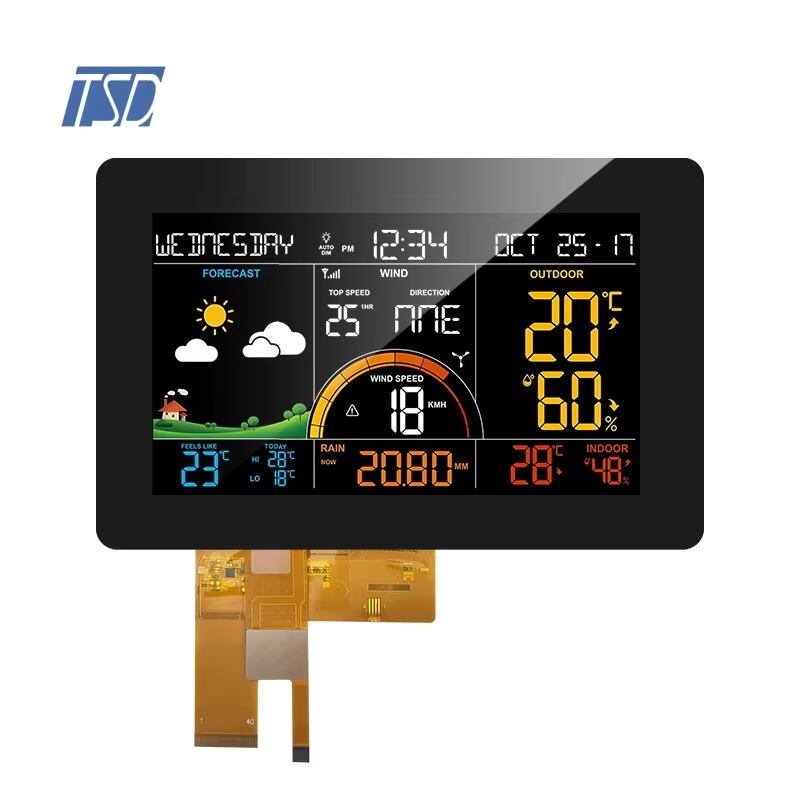The Evolution of Display Technology: Smart LCD Modules Leading the Way
Display technology has undergone a remarkable transformation over the past decades, with smart LCD modules emerging as a game-changing innovation in modern devices. These sophisticated components have revolutionized how we interact with our electronic devices, from smartphones and tablets to industrial equipment and automotive displays. Smart LCD modules combine advanced liquid crystal display technology with integrated control systems, offering unprecedented flexibility and functionality for device manufacturers and end-users alike.
The integration of smart LCD modules into various devices has created new possibilities for product design and user experience enhancement. These modules represent a significant leap forward from traditional display solutions, incorporating features like touch sensitivity, improved power efficiency, and enhanced visual clarity. As the demand for more intuitive and capable devices continues to grow, smart LCD modules have become an integral part of the modern technological landscape.
Core Benefits of Smart LCD Module Implementation
Enhanced Visual Performance and Clarity
Smart LCD modules deliver exceptional visual performance through advanced pixel technology and optimized contrast ratios. The sophisticated control systems within these modules enable precise adjustment of brightness levels and color reproduction, ensuring optimal visibility across various lighting conditions. This enhanced visual clarity is particularly valuable in applications where accurate information display is crucial, such as medical devices and industrial control panels.
The improved viewing angles offered by smart LCD modules contribute significantly to their versatility. Users can maintain clear visibility of displayed content from multiple positions, making these modules ideal for both personal devices and public information displays. The technology's ability to maintain color accuracy and contrast even at extreme viewing angles represents a substantial advancement over conventional display solutions.
Power Efficiency and Environmental Impact
One of the most significant advantages of smart LCD modules is their superior power efficiency. These modules incorporate advanced power management systems that optimize energy consumption based on display content and ambient conditions. The ability to selectively activate only necessary pixels and adjust backlight intensity results in substantial power savings, extending device battery life and reducing operating costs.
The environmental benefits of smart LCD modules extend beyond energy efficiency. These components are designed with sustainability in mind, often utilizing eco-friendly materials and manufacturing processes. The longer operational lifespan of smart LCD modules also contributes to reduced electronic waste, aligning with global initiatives for environmental conservation.

Integration Capabilities and Design Flexibility
Seamless System Integration
Smart LCD modules excel in their ability to integrate smoothly with various host systems and control interfaces. The modules come equipped with standardized communication protocols and flexible connectivity options, simplifying the implementation process for device manufacturers. This plug-and-play capability reduces development time and costs while ensuring reliable performance across different applications.
The modular nature of these displays allows for easy customization and upgrades, enabling manufacturers to adapt their products to evolving market demands without complete system redesigns. The ability to integrate additional features such as touch sensors, protective overlays, and custom interfaces makes smart LCD modules highly versatile components in modern device design.
Compact Form Factor and Space Efficiency
The engineering behind smart LCD modules prioritizes space efficiency without compromising functionality. These modules achieve impressive display capabilities while maintaining a slim profile, allowing for more compact device designs. The reduced space requirements open up new possibilities for product miniaturization and innovative form factors.
Manufacturers can maximize the available space within their devices by utilizing the efficient design of smart LCD modules. The integration of control electronics and display components into a single unit eliminates the need for separate controller boards, further contributing to space savings and simplified assembly processes.
Advanced Features and Future Applications
Interactive Capabilities and User Experience
Smart LCD modules often incorporate touch functionality and gesture recognition capabilities, enabling intuitive user interactions. These features transform passive displays into interactive interfaces that can respond to user input in real-time. The combination of visual feedback and touch sensitivity creates a more engaging and efficient user experience across various applications.
The modules' ability to support multiple touch points and complex gestures opens up possibilities for innovative interface designs and control schemes. This enhanced interactivity is particularly valuable in educational tools, gaming devices, and professional equipment where user engagement is crucial.
Emerging Technologies and Innovation
The future of smart LCD modules looks promising with ongoing developments in display technology. Innovations in quantum dot technology, micro-LED integration, and flexible displays are expanding the capabilities of these modules. These advancements promise even better visual performance, energy efficiency, and form factor flexibility.
Research into self-healing materials and adaptive display technologies suggests that future smart LCD modules may offer enhanced durability and autonomous adjustment capabilities. The integration of artificial intelligence and machine learning algorithms could enable displays that automatically optimize their performance based on usage patterns and environmental conditions.
Frequently Asked Questions
How do smart LCD modules differ from traditional LCD displays?
Smart LCD modules incorporate integrated control systems, enhanced functionality, and advanced features like touch sensitivity, while traditional LCD displays typically require separate controllers and offer limited functionality. The smart modules also provide better power efficiency, improved visual performance, and easier system integration.
What is the typical lifespan of a smart LCD module?
Smart LCD modules generally have a lifespan of 30,000 to 50,000 hours of continuous operation, depending on usage conditions and environmental factors. With proper maintenance and operation within specified parameters, these modules can provide reliable service for many years.
Can smart LCD modules be customized for specific applications?
Yes, smart LCD modules offer extensive customization options, including display size, resolution, interface type, and additional features like touch capability or protective coatings. Manufacturers can work with module suppliers to develop solutions tailored to their specific requirements and application needs.




